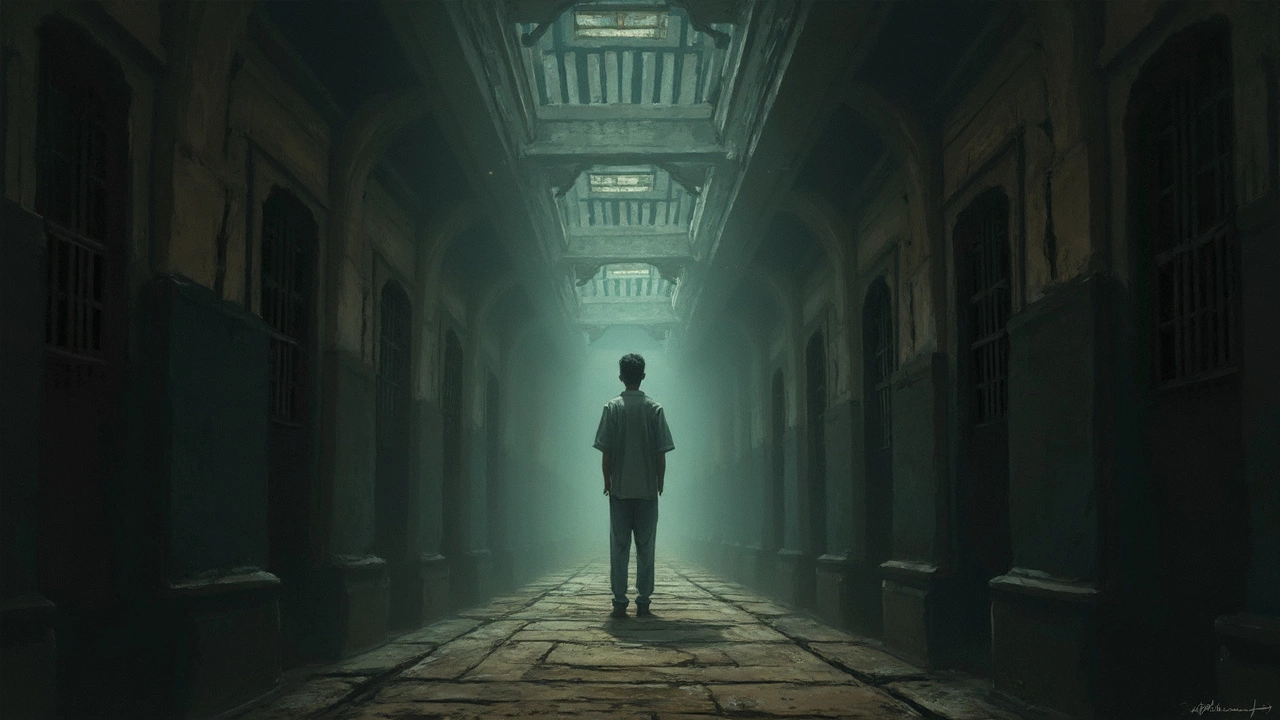
When you hear 'life imprisonment' in the context of India, you might think it's straightforward—spending the rest of one's life in a cell. But no, it's not that simple here. In India, a life term doesn't mean life till death. It actually refers to imprisonment until the last breath, but that's not always how it plays out in practice.
Most of the time, people sentenced to life imprisonment end up serving between 14 to 20 years. Surprised? Yeah, there's a lot more, like parole and remission, that can affect how long someone actually stays imprisoned. Let's dig a little deeper into how this system works and what can make a life term longer or shorter.
- Defining Life Imprisonment
- Duration and Variability
- Factors Affecting Sentences
- Parole and Remission
Defining Life Imprisonment
In the Indian legal system, "life imprisonment" is a sentence where a convict is required to remain in prison for their natural life. But often, it’s not as cut and dried as it sounds. Here’s where it gets interesting—there's no set number of years attached, unlike other sentences.
Traditionally, many believed it meant serving 20 years. However, this interpretation isn’t entirely accurate. The Supreme Court of India has clarified multiple times that life imprisonment literally means imprisonment for life unless remitted by the government.
Legal Clarifications
The Code of Criminal Procedure, 1973, doesn’t specify a fixed term for a life sentence. Instead, it relies on various judgments to interpret its duration. For instance, in the landmark judgment of 'Maru Ram v. Union of India', the court noted that life imprisonment means a convict can be imprisoned for the rest of his life.
The Real Deal
While no minimum or maximum age limit exists, in practical terms, life imprisonment ends after around 14 to 20 years due to parole or remission policies. These vary depending on the case's circumstances and the convict's behavior.
Moreover, not all cases qualify for such reduction; certain grave offences as per Indian Penal Code deny the possibility of these relaxations, emphasizing the seriousness of the crime.
Implications on Convicts
The implications can be vast, affecting not just the convicts but also their families. The uncertainty regarding the exact length adds a layer of complexity for everyone involved. Legal remedies and acts of mercy by the state play significant roles here.
Duration and Variability
When it comes to understanding how long a life imprisonment in India actually lasts, there's no one-size-fits-all answer. Officially, a life sentence means the convict spends the rest of their life in prison, but in practice, this usually isn't the case.
In reality, the duration can change based on several factors. On average, a life term can range from 14 to 20 years. Why the variation? Well, it often comes down to factors like the nature of the crime, behavior in prison, and even the state's policies.
Factors That Influence the Duration
- Crime Severity: More heinous crimes could mean a longer time before being eligible for release.
- State Laws and Policies: Different states have their own guidelines, which can impact how long a convict remains imprisoned.
- Parole and Remission: A convict's behavior and contribution to society can lead to reductions in their sentence.
Exceptional Variations
There are cases where life imprisonment truly means life till death, especially if it's for crimes that shook the nation or involve high-profile individuals. For these, the system may not grant parole or remission, reflecting the severity.
Changes Over Time
India's legal landscape isn't static. Policies evolve, and with it, so does how life sentences are applied. Campaigns and judicial interventions sometimes push for reforms, which can alter how these sentences play out.
So, the term 'life imprisonment' in India is more of a flexible framework rather than an absolute rule. It's fascinating how something that seems so black-and-white can have so many shades, don't you think?

Factors Affecting Sentences
In India, the duration of a life imprisonment isn't carved in stone. It's more like a clay sculpture that gets molded by various factors. So, what influences whether someone spends the rest of their days behind bars or gets out earlier?
Nature of the Crime
The kind of crime committed plays a huge role. For instance, if it's a particularly heinous act, the courts might be less forgiving. The Indian Penal Code classifies crimes as bailable or non-bailable, with life imprisonment often associated with the latter. Judges weigh the severity and impact of the crime.
Judicial Discretion
The judge calling the shots has quite a bit of say, thanks to sentencing guidelines. They consider the crime's circumstances and the convict's intent, past behavior, and potential for rehabilitation. This discretion means that two people convicted of similar offenses might receive varied sentences.
Behavior and Rehabilitation
Good behavior and signs of reform can sway outcomes. Prisons focus on rehabilitation, so inmates showing genuine improvement could get time off their sentences. Participation in vocational training programs or showing remorse could tip the scales in their favor.
Judicial Appeals and Reviews
Convicts can challenge their sentences through appeals. The appellate courts might reduce or modify the sentence based on discrepancies, new evidence, or legal errors in the initial trial. Sometimes, sentences get reviewed by higher judicial bodies.
Add into the mix politics and public opinion, particularly in high-profile cases, and you've got a complex web shaping life imprisonment sentences in India.
Parole and Remission
Parole and remission are corners of hope in the otherwise grim concept of life imprisonment in India. These mechanisms provide inmates with the possibility of an early release based on good behavior and other specific conditions.
Understanding Parole
Parole is a temporary release or permanent release based on certain criteria. Prisoners on parole may return to society before completing their sentence, but they're under constant supervision and are expected to meet specific requirements. These conditions usually include how they behave outside and if they adhere to any prescribed activities, like rehabilitation programs. It's not a get-out-of-jail-free card though; violating parole terms can land someone right back in prison.
How Remission Works
The concept of remission involves reducing the jail term due to good behavior, work and study in prison, or exceptional achievements like winning an academic degree. The term is typically cut by a few days each month, based on guidelines set by the Indian Prison Act and the state authorities.
The Role of the Government
The state government plays a huge role in both parole and remission, as they assess each application with seriousness. Factors like the nature of the crime, conduct, and threat to society are considered before granting parole or remission. It's a well-balanced check system, ensuring that someone won't end up on the streets without proving some degree of reform.
| Parole and Remission Basics | Details |
|---|---|
| What is assessed? | Behavior, adherence to parole conditions, threat level. |
| Who decides? | State Government, based on guidelines from the Indian Prison Act. |
In simpler terms, even if a life imprisonment sentence might initially seem endless, parole and remission offer a second chance. They blend discipline and hope, guiding individuals back to society while stressing the significance of serving part of their sentence.